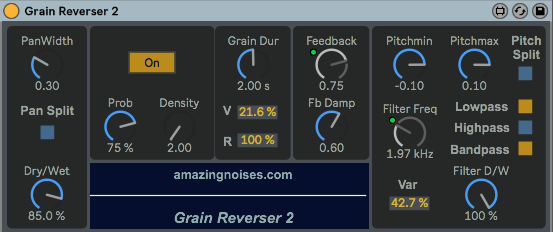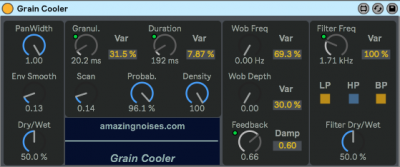

It’s all too easy to get into a particular groove with your effects-based workflow – reverb on Send 1, delay on Send 2, the same old dynamics/EQ/saturation chain on the drums bus, etc – so pack your creative bag and head off on as many tangents as you can find. If yours doesn’t, though, or if you can’t achieve the result you’re after with it, insert an appropriate plugin for the issue at hand (a high-pass filter if you just want to de-rumble a reverb, for example, or a parametric EQ for more complex situations) and get carving. You probably already use EQ on most of the channels and busses in your mixer (and if you’re not, you should be!), but are you being similarly frequency-conscious with effects? Just as guitars, vocals, synths and cymbals can all get in each other’s way, requiring corrective equalisation to untangle, so, too, can reverb tails, delay echoes and other ‘wet’ signals, particularly those with abundant mid/high-frequency content.įortunately, many effects feature their own onboard EQs or filters, enabling you to resolve frequency clashes from the comfort of the plugin itself. But how about using your reverb plugin as the starting point for a more adventurous effects chain? Follow it up with some distortion, say, for an edgier ambience or an envelope-following filter for a dramatic tail or a sidechain compressor keyed off a percussion track for a rhythmic angle or a ping-pong delay for stereo weirdness – or all of the above (taking tip 1 into account, of course)? You get the picture. You route sounds to it on a send/return bus to place them in a virtual space, without anything else going on in the way of further processing apart from perhaps the reverb’s built-in EQ – and rightly so, as mixing ‘best practise’ demands. Reverb is usually employed as an ‘end-point’ effect. It’s often said that contemporary electronic music sounds overly tight and ’perfect’, and the ubiquity of tempo sync has to be a factor in that. Feedback delays gently drift as they fade out, tremolos and wah-wahs sound more ‘human’, flangers and phasers take on a retro vibe… But have you ever thought about turning it off and setting your timings by ear instead? Almost all syncable plugin parameters also have a ‘free running’ option, where timings are set freely in milliseconds or Hz, rather than snapped rigidly to musical note values, and by taking your effects off the grid, you can lend an organic, natural feel to the parts in a track and the interactions between them.

The ability to synchronise plugin effects to host tempo is one of the countless benefits of the software-based studio, keeping your delay lines, LFOs and other temporal controls perfectly in time with each other. You don’t have to actually pull that saturation plugin out of the middle of your elaborately constructed chain altogether, but try pushing the wet/dry mix back towards dry, or lower the gain. Of course, when designing sounds and employing resampling techniques (see below), the application of multiple effects is all part of the process, but use your ears, and if things start sounding unbalanced or overcooked, dial them back. As a rule of thumb: if in doubt, take it out. While almost every channel should include compression and EQ, and a touch of reverb or delay on an auxiliary bus always pays sonic dividends, beyond that, judgement should be exercised. Stop! Just say no! Keep it classy and give your sounds room to breathe. It starts innocently enough with a simple tremolo or phaser, but then that new auto-filter catches your eye and since you’ve bunged that in there, you might as well get that crazy frequency shifter involved, too… Oh, and everything sounds better shoved through a chorus, right? Before you know it, your plugin chain looks like an explosion in a pixel factory. Of all the mistakes made by the novice producer, the overuse of effects is, without doubt, one of the most damaging.
Soundmagic spectral michael norris how to#
If you’d like a comprehensive guide to FX and how to use them, check out our online Complete Electronic Music Production course. With that in mind, we present Seven Ways to Make Your Effects Amazing. Are you getting the most from your effects plugins? It’s a bottomless pool of possibility and inspiration, and even the most seasoned producer can always learn something new.


 0 kommentar(er)
0 kommentar(er)
